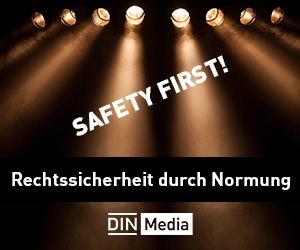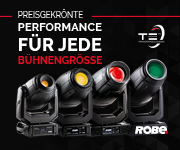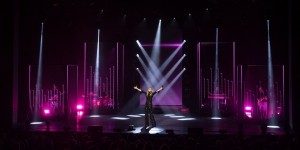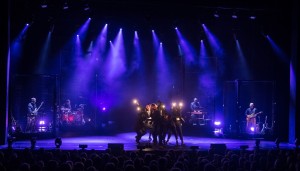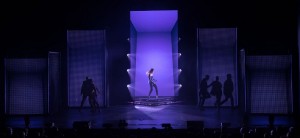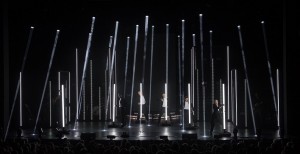Aktuelle News & Schlagzeilen
Robe fixtures on tour with Véronic DiCaire
Montreal-based visual design practice Luz Studio, headed by Matthieu Larivée, created the production design at the core of French-Canadian singer and impressionist Véronic DiCaire’s current ‘Showgirl’ tour, which was launched in Canada in December 2019, then toured arenas in Europe, before the Coronavirus pandemic took hold and curtailed all live events until the curve is flattened.
The ‘Showgirl’ concept saw the artist delivering material written/performed by around 50 iconic female vocalists in their style and voices, backed by six dancers and four musicians. Larivée proposed an integrated set, lighting and video design which featured Robe moving lights at the center, with 28 x MegaPointes and 12 x Spiiders, plus six BMFL Blades and two BMFL Spots being used with a RoboSpot remote follow-spotting system.
The stage architecture was defined by five distinctive LED columns onstage, a central flat-plane LED surface flanked by four 3-sided columns with the four musicians in the middle, which allowed them to be concealed and revealed as desired.
Larivée worked closely with the artist herself and her creative team including show director Josée Fortier, choreography/stage director Geneviève Dorion-Coupal and artistic director Patricia Ruel. He also collaborated closely with Pierre Martinez (lighting director on the last tour) and asked him onboard again in the same role.
The basic starting point for lighting the show was the band on stage. Each musician was positioned on an 8 ft x 8 ft riser, which DiCaire wanted visible - or not - throughout the set, so the first task was integrating these risers slickly into the stage design. Utilizing blow-through screen with no PSU was the first phase of dealing with the “invisibility puzzle”. DiCaire’s mood boards for the show demanded graphic-style lighting, with LED appearing in dramatic bold strips at times, contrasted, combined and enrichened with matching lighting looks.
The MegaPointes were mainly positioned on the overhead rig in a V-shaped configuration, and on two vertically hung drop-bars either side of the center screen. They produced the desired looks either by pointing directly downwards or being zoomed out very wide to light the screen structures. No gobos were used, but the beams and colors were fully maximized.
Six of the 12 Spiiders lived on the most downstage overhead truss or LX fly bar, with 6 on the floor in the offstage footlights position for front lighting and washing across the stage in a range of colors. All six BMFL Blades were rigged on the downstage truss where they doubled for front lighting and could be swung round to illuminate the audience. The two BMFL Spots on the RoboSpot system were also on the front truss. Pierre Martinez ran the show lighting on a GrandMA console.
Some custom fixtures were added to help create specific effects, including wireless gloves with lights held by the dancers during the opening sequence. Matthieu Larivée also had some special 2-meter mappable LED tubes built which are fully seamless and were carried, lightsaber-style, by the dancers during one of the medleys. Lighting and video equipment for the tour was supplied worldwide by Solotech.
(Photos: Claude Dufresne)
SCHLAGZEILEN
news archiv
suche
© 1999 - 2025 Entertainment Technology Press Limited News Stories

